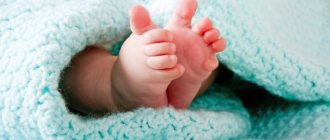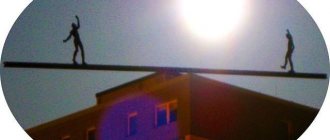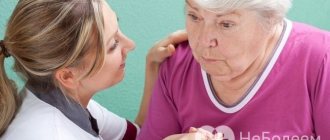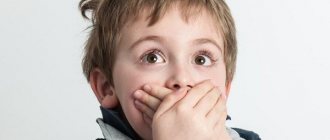What is myoclonus?
Myoclonus (or myoclonus) is a symptom, not a disease, characterized by short-term rapid contractions of a muscle or group of muscles.
Myoclonic jerks or jerks are usually caused by sudden muscle contractions, called positive myoclonus, or muscle relaxations, called negative myoclonus. Myoclonic jerks can occur singly or sequentially, with or without a pattern. They may occur infrequently or multiple times every minute. Myoclonus sometimes occurs in response to an external event or when a person attempts to make a movement. The person experiencing the twitching cannot control it.
In its simplest form, myoclonus consists of muscle twitching followed by relaxation. An example is hiccups, which is also myoclonus. Other familiar examples of the condition are the jerks that some people experience while falling asleep. These simple forms of myoclonus occur in normal, healthy people and are not problematic. If more widespread, the condition can cause persistent shock-like contractions in a muscle group.
In some cases, myoclonus begins in one area of the body and spreads to muscles in other areas. More severe cases of the condition can distort movement and severely limit a person's ability to eat, speak, or walk. These types of myoclonus may indicate an underlying brain or nerve disorder.
The diagnosis is made based on symptoms and is sometimes confirmed by the results of an electromyographic study. Treatment includes correction of reversible diseases of the brain or nervous system and symptomatic therapy with medications.
Causes of myoclonus
Myoclonus may develop in response to:
- infection;
- brain or spinal cord injury;
- stroke;
- brain tumors;
- renal failure;
- liver failure;
- lipid storage diseases;
- chemical or drug poisoning;
- and other violations.
Prolonged deprivation of oxygen to the brain, called hypoxia, can lead to posthypoxic myoclonus. The condition can occur on its own, but most often it is one of several symptoms associated with various nervous system disorders. For example, myoclonic jerk may develop in patients with:
- multiple sclerosis;
- Parkinson's disease;
- Alzheimer's disease;
- Creutzfeldt-Jakob disease.
Myoclonic jerks are also common in people with epilepsy, a disorder in which electrical activity in the brain becomes erratic, leading to seizures.
Sleep myoclonus in children
Tremors often occur in children; they can be physiological or pathological. Indeed, infants are more likely than preschool and school-age children to experience seizures during naps.
Sleep myoclonus in children:
- This is due to the peculiarities of the development of brain tissue and the nervous system. The functioning of the nervous system in a baby differs from that of an adult; his deep sleep phases are much shorter than fast sleep. Thus, REM sleep predominates.
- Accordingly, children have much more nighttime shudders than adults. Babies can shudder throughout the night, because there are many more REM phases than deep sleep phases. During the process of shudders, the activity of cell division and processes in consciousness changes.
- Parents are usually told not to worry if their baby shakes in their sleep. This is absolutely normal for children. But if, along with this phenomenon, there are daytime convulsions or shaking of the limbs, then the child should be taken to a neurologist.
Dreams
Types of myoclonus
Classifying the many different forms of myoclonus is difficult because the causes, consequences, and responses to therapy vary widely. The most commonly described types are listed below.
- Action myoclonus is characterized by muscle twitching caused or amplified by voluntary movement or even the intention to move. It can be worsened by attempts at precise, coordinated movements. This type is the most disabling form of myoclonus and can affect the arms, legs, face and even the throat. This type of myoclonus is often caused by brain damage that occurs due to a lack of oxygen and blood flow to the brain when breathing or heartbeat temporarily stops.
- Cortical reflex myoclonus is a type of epilepsy that occurs in the cerebral cortex, the outer layer or “gray matter” of the brain responsible for much of the information processing that occurs in the brain. During this type of myoclonus, jerking usually involves not only several muscles in one part of the body, but jerking may also occur that involves a group of muscles. The cortical shape can become stronger when people try to move in a certain way or feel a certain sensation.
- Essential myoclonus occurs in the absence of epilepsy or other obvious problems in the brain or nerves. It can occur randomly in people with no family history, but can also occur in members of the same family, indicating that it can sometimes be hereditary. Significant myoclonus tends to be stable without increasing in severity over time. In some families, there is an association with significant myoclonus, significant tremors, and even a form of dystonia called myoclonus-dystonia. Another form of significant myoclonus may be a type of epilepsy with no known cause.
- Palatal myoclonus is a regular, rhythmic contraction of one or both sides of the back of the mouth, called the soft palate. These contractions may be accompanied by myoclonus in other muscles, including the muscles of the face, tongue, throat, and diaphragm. The contractions are very rapid, occurring 150 times per minute, and can persist during sleep. The condition usually appears in adults and can last indefinitely. Some people with the palatal form view it as a minor problem, although some sometimes complain of a "clicking" sound in the ear, a noise produced when the muscles of the soft palate contract. The disorder can cause discomfort and severe pain in some people.
- Progressive myoclonic epilepsy (PME) is a group of diseases characterized by myoclonus, epileptic seizures and other severe symptoms such as problems walking or speaking. These rare disorders often worsen over time and are sometimes fatal. Research has identified many forms of PME.
- Lafora disease is inherited as an autosomal recessive disorder, meaning that the disease occurs only when a child inherits two copies of the defective gene, one from each parent. Lafora's disease is characterized by myoclonus, epileptic seizures, and dementia (progressive loss of memory and other intellectual functions).
- The second group of PME diseases belongs to the class of lysosomal storage diseases , usually including myoclonus, vision problems, dementia and dystonia (prolonged muscle contractions that cause twisting movements or abnormal postures).
- Another group of PME disorders in the class of systemic degenerations is often accompanied by action myoclonus, seizures, and problems with balance and walking. Many of these diseases begin in childhood or adolescence.
- Reticular reflex myoclonus is a type of generalized epilepsy that occurs in the brain stem, the part of the brain that connects to the spinal cord and controls vital functions such as breathing and heartbeat. Myoclonic jerks usually affect the entire body, simultaneously affecting muscles on both sides of the body. In some people, myoclonic spasms occur only in a part of the body, such as the legs, and all the muscles in that part are used with each thrust. The reticular reflex form of the disorder can be caused by voluntary movement or an external stimulus.
- The stimulus is sensory myoclonus , triggered by a number of external stimuli, including noise, movement and light.
- Sleep myoclonus occurs in the initial stages of sleep, especially when falling asleep. Some forms appear to be sensitive to stimuli. Some people with this form of the disorder rarely experience anxiety or need treatment. However, it can be a symptom of more complex and bothersome sleep disorders, such as restless legs syndrome, and may require treatment.
Symptoms of myoclonus
Myoclonus may be mild or severe. Muscles can contract quickly or slowly, rhythmically or irregularly. Myoclonic jerks may be infrequent or frequent. They can occur spontaneously or under the influence of sudden noise, light or movement. For example, they can be triggered by reaching for an object or taking a step. In Creutzfeldt-Jakob disease (a rare degenerative brain disease), myoclonus worsens with sudden fear.
Myoclonus, which develops as a result of metabolic disorders, can be long-lasting and affect different muscle groups, sometimes leading to cramps.
Nocturnal myoclonus: pathology or normal?
It is believed that this is a physiological phenomenon that has not been fully studied at the moment. During research, doctors found that there are two types of shaking or cramps of the limbs when going to bed.
Positive myoclonus is an active muscle contraction. That is, during the transition from a state of wakefulness to sleep, a person’s arms and legs sharply contract. The eyelids may also tremble. Sometimes there is trembling of the whole body, which can cause awakening.
Negative myoclonus - relaxation of nerve endings and decreased muscle tone. Convulsions are observed, that is, twitching, or slight shaking, similar to a tremor. There does not have to be any specific movement during the phenomenon. They can be either synchronous or asynchronous. There may be some rhythm or lack thereof. Often spasms are spontaneous or reflex. As a result of overexertion, a tremor of the face may be observed, the person may smile or twitch.
If the cramps are obsessive, repeat every night, and contribute to awakening, this indicates pathology. If constant spasms are observed during naps, as a result of which a person awakens, it is first necessary to diagnose the disease. Perhaps the tremors are a symptom of a serious illness.
In the kingdom of Morpheus
Diagnostics
Diagnosis is made based on signs, examination by a doctor, blood tests, magnetic resonance imaging and electromyographic studies.
- Blood tests are usually performed to determine the levels of sugar, calcium, magnesium, and sodium in the blood. Abnormal levels of these substances may indicate that a metabolic disorder is the cause.
- Magnetic resonance imaging (MRI) is used to detect changes in the brain that are characteristic, for example, of Alzheimer's disease.
- In patients with a seizure disorder, electroencephalography may be performed to detect myoclonus.
Prevention
For preventive purposes, experts advise:
- do not overwork, do not overexert yourself;
- lead a healthy lifestyle;
- get rid of bad habits;
- walk in the fresh air, relax during the day;
- take relaxing baths with herbs and oils;
- maintain proper nutrition;
- massage, do yoga.
You can sign up for acupressure and acupuncture; self-medication is strictly prohibited.
Treatment of myoclonus
Treatment for myoclonus focuses on medications that can help reduce symptoms. The first choice drug for treatment, especially of certain types of myoclonus, is clonazepam, a type of tranquilizer. Dosages of clonazepam are usually increased gradually until the patient feels improvement or side effects appear. Drowsiness and loss of coordination are common side effects. The beneficial effects of clonazepam may decrease over time if a person develops tolerance to the drug.
Many medications used to treat myoclonus, such as barbiturates, levetiracetam, phenytoin, and primidone, are also used to treat epilepsy. Barbiturates slow down the central nervous system and cause a tranquilizing or antiseptic effect. Phenytoin, levetiracetam, and primidone are effective antiepileptic drugs, although phenytoin may cause liver failure or other harmful long-term effects. Sodium valproate is an alternative therapy for myoclonus and can be used alone or in combination with clonazepam. Although clonazepam and/or sodium valproate are effective for most people with the disorder, some people experience adverse reactions to these drugs.
Forecast
Simple forms of myoclonus occur in normal, healthy people and do not cause serious problems. In some cases, the disorder begins in one area of the body and spreads to muscles in other areas. More severe cases of myoclonus can distort movement and severely limit a person's ability to eat, speak, or walk. These types of myoclonus may indicate a brain or nerve disorder.
Although clonazepam and sodium valproate are effective in treating most cases of the disorder, some people experience adverse reactions to these drugs. Additionally, the benefits of clonazepam may decrease with long-term use.
Sleep myoclonia: what is missing in the body?
Very often, myoclonus, which was not observed before, arose out of the blue and is explained by a change in diet. The person went on a diet, or his daily diet changed.
Sleep myoclonus, what is missing in the body:
- With a lack of certain minerals and trace elements, muscle cramps may occur. Most often this occurs with a lack of iron, that is, with anemia, as well as in the case of magnesium and potassium deficiency.
- The muscles cannot function normally and shudder. No special treatment is required, but it is necessary to review the diet and also include additional consumption of minerals and trace elements in the menu.
- These can be vitamin or combination preparations that can be found in any pharmacy. Most often, shudders appear during the off-season, when the amount of fresh fruits and vegetables in the diet decreases.
Climb










